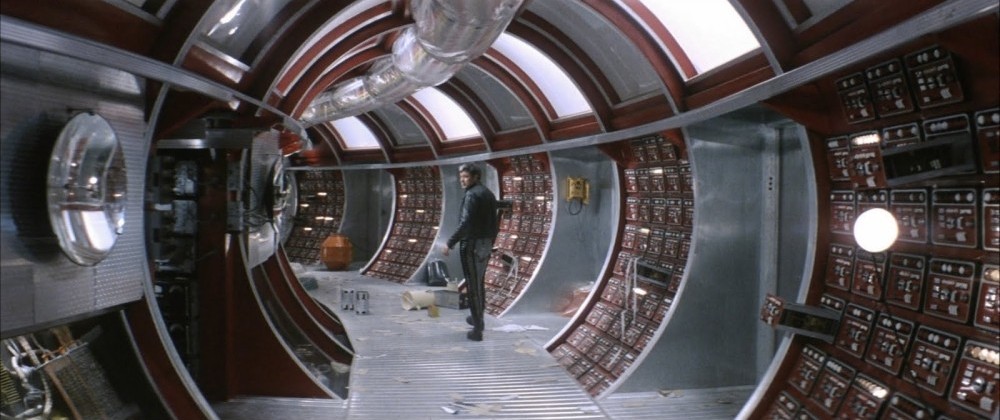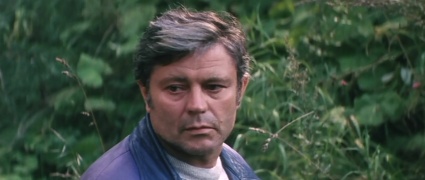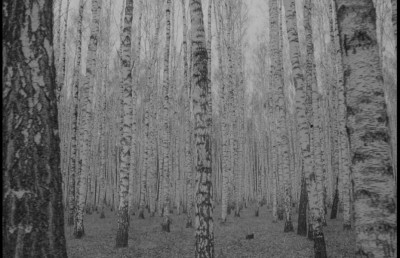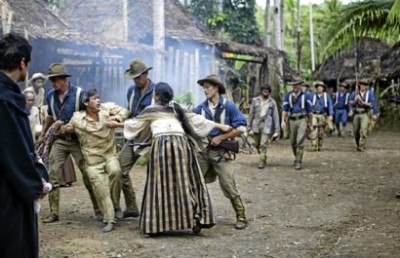The Spiritual Cinema of Andrei Tarkovsky

No one has ever seen your face, and yet a thousand
Doorkeepers have arrived. You are a rose still closed,
And yet a hundred nightingales have arrived.
Hafez – “A Thousand Doorkeepers,” The Divan
Abstract
A conception of spirituality is indispensable to acquire a holistic perspective on the films of Andrei Tarkovsky. Unlike any other filmmaker of his generation, Tarkovsky’s films invent a language of the spirit through the poetry of cinematic images. As opposed to the genre of “religious films” which deal with the role of religion in the lives of people, the “spiritual cinema” of Tarkovsky is about interior terrains where a person is one with oneself – where faith is not about making public declarations of belief but more about waiting for the miracle to happen, a miracle that occurs on the borders of invisible realms and can be felt rather than logically deciphered.

Born to the poet Arseny Tarkovsky and his actress-wife Maria Ivanovna, Andrei Tarkovsky (1932-1986) surpasses in fame either of his parents although both of them outlived the Russian master, who made some of the greatest films in the history of cinema. Tarkovsky’s cinema is not cinema for cinema’s sake. The poetry for which he’s celebrated in the way he made his seven films – beginning with Ivan’s Childhood (1962) to his last movie The Sacrifice (1986) before he died of lung cancer in the same year – cannot be separated from questions he asks with regard to the “spiritual endeavour which aspires to make man more perfect.” [1] In Tarkovsky, spirituality is not so much about Christianity, which served as a leitmotif to his work, or about institutional religion, as much as it is about how we go through our “life on earth,” which is a journey of spirit more than anything else.
Art, the individual, and the life of the spirit are interconnected in his work, whether in Andrei Rublev (1966), the 15th century icon painter who must “believe” before he can be creative; Solaris (1972), a film about the anxieties that knowledge produces when you have to face your real self, or the quest for redemption in Stalker (1979) and Nostalgia (1983). “‘In the beginning was the Word.’ Why is that, Papa?” is the poignant last line of the movie The Sacrifice (1986) that Tarkovsky dedicated to his son Andriosha “with hope and confidence.” [2] What in the discourse of a rationalist is the “accident” of birth, an inexplicable coincidence that it is not necessary for one to pry into –for Tarkovsky, is the “miracle” that constitutes life in a broad sense. To embrace that which looks like a coincidence as miracle is what faith is all about. The miracle defines the language of spirit.
The spiritual landscapes in Tarkovsky are deeply private worlds – not the domain of symbols and metaphors attempting to impress the audience with their sense of grandeur and becoming. As Robinson points out in The Sacred Cinema of Tarkovsky, “No other filmmaker uses rain, water, fire or flight in the same, idiosyncratic, hypnotic and profound way as Andrei Tarkovsky…Yet Tarkovsky denies that these elements are ‘symbols’ – he dislikes symbols, metaphors, parables and phantasies. He acknowledges the power of dreams, the occurrence of miracles, the movement of inanimate objects and the existence of God, but he denies symbols and metaphors.” [3] Tarkovsky goes literally by the observation that the language of spirit is in the very nature of things. The miracle is a Joycean epiphany that is “invisible” for all practical purposes. The image stands at the borders of the invisible:
To achieve life breathing through the frame, Tarkovsky films motion: grass, trees, clothes blowing in the breeze and (so often) running water. The soundtrack emphasizes motion: dripping, creaking, rustling, the noises of nature on the move, a world that never keeps still. Even when Tarkovsky’s frame seems to be static, the soundtrack evokes motion. Robert Bresson wrote: “to TRANSLATE the invisible wind by the water it sculpts in passing.” This is precisely what Tarkovsky tries to do: to depict the invisible by showing what it touches and moves. The invisible in Tarkovsky’s philosophic cinema is the spiritual, the divine, the unknown and unknowable. So he depicts a group of trees and then has the wind rustle the leaves. [4]
Faith is an affirmation of the miraculous – that which is ‘invisible’ and ‘everywhere’ at any point in time provided you make the choice to see what is plain to the eye of the spirit. Speaking of his last film The Sacrifice Tarkovsky says:
Has man any hope of survival in the face of all the patent signs of impending apocalyptic silence? Perhaps an answer to that question is to be found in the legend of the endurance of the parched tree, deprived of the water of life, on which I based this film, and which has such a crucial place in my artistic biography. The monk, step by step and bucket by bucket, carried water up the hill to water the dry tree, believing implicitly that his act was necessary, and never for an instant wavering in his belief in the miraculous power of his own faith in God. He lived to see the Miracle: one morning the tree burst into life, its branches covered with young leaves. And that ‘miracle’ is surely no more than the truth. [5]
Hope is waiting – the same word which means both being and doing – in the spirit of unlimited patience for the miracle to happen. The existence of the human person has no other meaning for Tarkovsky except to hope for the miracle – like the monk in the story taking the bucket up the hill each morning of each day of his life to water the dry tree. The moment of liberation is when you know there is more to life than what the body endures or mind suffers on a day-to-day basis. “Tarkovsky’s religious cinema doesn’t depict Christ or God, but does reveal a world in which the unknown is not in the next country or the next town but right here, in this building, in this room.” [6] The unknown is you and everything that passes through you for which there is no language except that of the spirit.
No matter under what ideological baggage we attempt to hide, whether we call ourselves religious or non-religious, or whatever fancy label we invent to suit our whims, Tarkovsky makes us aware of our individual responsibility towards life around us in the deepest sense possible. That type of responsibility can only be spiritual because it is a commitment that transcends the limits that time imposes on human beings. Though Tarkovsky’s movies are deeply religious – it is in the spiritual sense that we need to analyze his work, especially in a time-period where both religion and spirituality have been discredited by “Modern mass culture, aimed at the ‘consumer’, the civilisation of prosthetics…crippling people’s souls, setting up barriers between man and the crucial questions of his existence, his consciousness of himself as a spiritual being.” [7]
In the cinema of Tarkovsky, the spirit is removed of all abstractions and revealed in its concrete forms. Mircea Eliade points out in The Sacred and the Profane that “The sacred always manifests itself as a reality of a wholly different order from “natural” realities.” [8] The concreteness of the sacred is not in the realm of ideas or the manner in which Hegel talks about the spirit in Phenomenology of Spirit: “The spiritual alone is the actual; it is essence, or that which has being in itself; it is that which relates itself to itself and is determinate, it is other-being and being-for-self, and in this determinateness, or in its self-externality, abides within itself; in other words, it is in and for itself?” [9] Tarkovsky’s understanding of the spirit is closer to Eliade than to Hegel: “The sacred tree, the sacred stone are not adored as stone or tree; they are worshipped precisely because they are hierophies, because they show some thing that is no longer stone or tree but the sacred, the ganz andere.” [10]
When do the stone or the tree stop being stone or tree and enter the domain of the sacred? The transition from the material to the spiritual does not take away the objectness of the object. It enhances the object-character of the object and brings out its essential nature. Something has to be more than itself for it to be it-self. Something has to move out of time into eternity. The object abandons the condition of finitude in order to become infinite – a process that gives birth to the “image.” As Tarkovsky puts it: “The artistic image is always a metonym, where one thing is substituted for another, the smaller for the greater. To tell of what is living, the artist uses something dead; to speak of the infinite, he shows the finite. Substitution . . . the infinite cannot be made into matter, but it is possible to create an illusion of the infinite: the image.” [11]
The artist “shows the finite” in order to point toward the infinite. Through the “image” the artist creates “an illusion of the infinite.” In Philosophical Investigations, Wittgenstein notes that, “Where our language suggests a body and there is none: there, we should like to say, is a spirit.” [12] At any point in time the body is an absence because it has either receded into the past or is lingering in the future. St. Augustine deals with this paradox of time in the Book XI of the Confessions. [13] What exists in the eternal present – or the infinite – is the “spirit” and not the body. “Through the image is sustained an awareness of the infinite: the eternal within the finite, the spiritual within matter, the limitless given form.” [14]
Language “suggests a body” or the finite; the infinite is the language of spirit and is discovered through the body or the finite. The spirit speaks the language of the commonplace or the ordinary experience that opens the doors to the infinite. Sean Martin says that: “In the oriental tradition, obviously finite things, such as the corner of a room or the view from a window, represented the infinite. In the context of the films, it could be that Tarkovsky senses a numinous quality in the everyday or forgotten corners of our lives.” [15] Hence his fascination with “still lives,” like “the tea cups on the table in the rain in Solaris, the comb and Bible in Nostalghia, the mirror, cup and stereo in The Sacrifice, to name but three – also echo the painterly device of the memento mori, objects which serve to remind the person contemplating the painting that life is transitory.” [16]
The language of spirit in Tarkovsky is not about Hegelian abstractions or Kantian subtleties but enters the practical task of editing. His criticism of the “Montage cinema” of Eisenstein is that it appeals to “intellectual experience” where “the image becomes an end in itself, and the author proceeds to make a total onslaught on the audience, imposing upon them his own attitude to what is happening.” [17] This is opposed to the Tarkovsky style of editing which is “sculpting in time.” Editing is a “spiritual” activity because it “brings together shots which are already filled with time, and organises the unified, living structure inherent in the film; and the time that pulsates through the blood vessels of the film, making it alive, is of varying rhythmic pressure.” [18] Time does not stop being time but moves into the eternal or the timeless. “The image is tied to the concrete and the material, yet reaches out along mysterious paths to regions beyond the spirit.” [19]
If cinema’s “destined role” is humanity’s liberation from “finitude” it is in fact the destiny of art to speak the language of the infinite and bring the human person closer to the spirit. Humanity’s needs are material but its longings are emotional and spiritual. While Marx and Engels root the spiritual in a material discourse, The German Ideology makes the case for a “communist society” where the individual creative being blossoms because “nobody has one exclusive sphere of activity but each can become accomplished in any branch he wishes, society regulates the general production and thus makes it possible for me to do one thing today and another tomorrow, to hunt in the morning, fish in the afternoon, rear cattle in the evening, criticise after dinner, just as I have a mind, without ever becoming hunter, fisherman, herdsman or critic.” [20] In overcoming the alienation of labor a communist society creates the possibility of a spiritual being. Erich Fromm in Marx’s Concept of Man argues that “most Asian and African countries are deeply attracted by the ideas of Marxist socialism…because of the spiritual elements of justice, equality and universality which are inherent in Marxist socialism (rooted in the Western spiritual tradition).” [21] To Fromm, historical materialism ultimately emerges from a “spiritual tradition” that rests on notions of “justice, equality and universality” and therefore the appeal it has to those who suffer oppression in parts of the third world. In articulating the need for the spiritual liberation of humankind, Tarkovsky dwells on the notion of a complete person that comes from the same “Western spiritual tradition” that according to Fromm, Marxism originates from. As Tarkovsky sees it: “This requires a true sense of your own dignity: an acceptance of the objective value and significance of the ‘I’ at the centre of your life on earth, as it grows in spiritual stature, advancing towards the perfection in which there can be no egocentricity.” [22] Tarkovsky’s understanding of spirituality removes the emphasis from religion as a way of life to that of individual responsibility in recreating the world.
With corporate-based mass technologies dedicated to the project of obliterating any trace of individuality, and discussions on religion reduced to ritual, politics and unreal collective goals, an overpopulated earth makes it harder to recognize the sanctity of the individual and his or her inner life. This is the context in which we must understand Tarkovsky’s work as a whole when he says: “I see it as my duty to stimulate reflection on what is essentially human and eternal in each individual soul.” [23] What is missing in the way religion is understood in the 21st century plagued by extremisms of those who have the power and those who do not is the spirituality that comes with personal commitment to make a better world. Tarkovsky’s movies continue to throw light on complex domains in a person’s inner life when you discover the “miracle” of life each and every day without which the future becomes as meaningless as the past. Such a spiritual life is not abstract and de-individualized but contrarily something that is felt – so deeply that it has a transformative impact on the world around you.
Endnotes
1 Tarkovsky, Andrei. Sculpting in Time. Trans. Kitty Hunter-Blair. Austin: University of Texas Press, 1989, p. 27.
2 The Sacrifice. Dir. Andrei Tarkovsky. Perf. Erland Josephson. Sandrew, 1986. Film.
3 Robinson, Jeremy Mark. The Sacred Cinema of Andrei Tarkovsky. Kent: Crescent Moon, 2006, p. 155.
4 Ibid., p. 149.
5 Tarkovsky, Ibid., p. 229.
6 Robinson, Ibid., p. 275.
7 Tarkovsky, Ibid., p. 42.
8 Eliade, Mircea. The Sacred and the Profane: The Nature of Religion. Trans. Willard R. Trask. New York: Harvest Book, 1957, p. 10.
9 Hegel, Phenomenology of Spirit. Trans. A. V. Miller. Oxford: OUP, 1977, p. 14.
10 Eliade, ibid., p. 12.
11 Tarkovsky, ibid., p. 38.
12 Wittgenstein, Philosophical Investigations. Trans. G. E. M. Anscombe, P. M. S. Hacker and Joachim Schulte. West Sussex: Wiley-Blackwell, 2009, p.22.
13 Saint Augustine. Confessions. Trans. Albert Cook Outler. Lousiville: Westminister John Knox Press, p. 252.
14 Tarkovsky, ibid., p. 37.
15 Martin, Sean. Andrei Tarkovsky. Harpenden: Pocket Essentials, 2005, p. 37.
16 Ibid., p. 37.
17 Tarkovsky, ibid., p. 118.
18 Ibid., p. 114.
19 Ibid., p. 114.
20 Marx and Engels, The German Ideology. Marxists Internet Archive.
21 Fromm, Erich. Marx’s Concept of Man. Trans. T. B. Bottomore. New York: Frederick Ungar Publishing Co, 1961, p. vi.
22 Tarkovsky, ibid., p. 232.
23 Ibid., p. 200.













